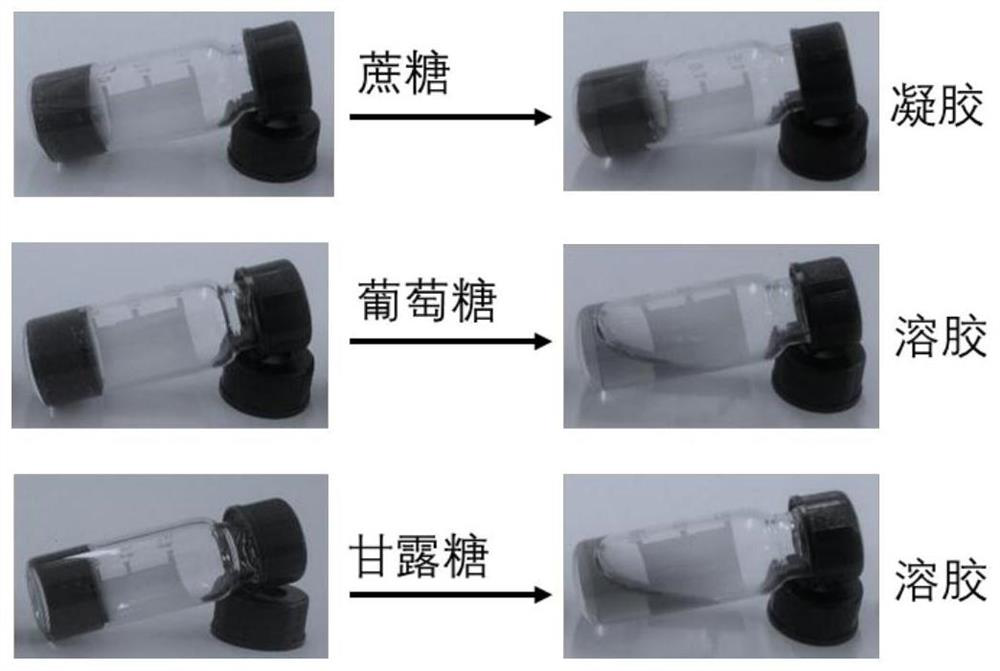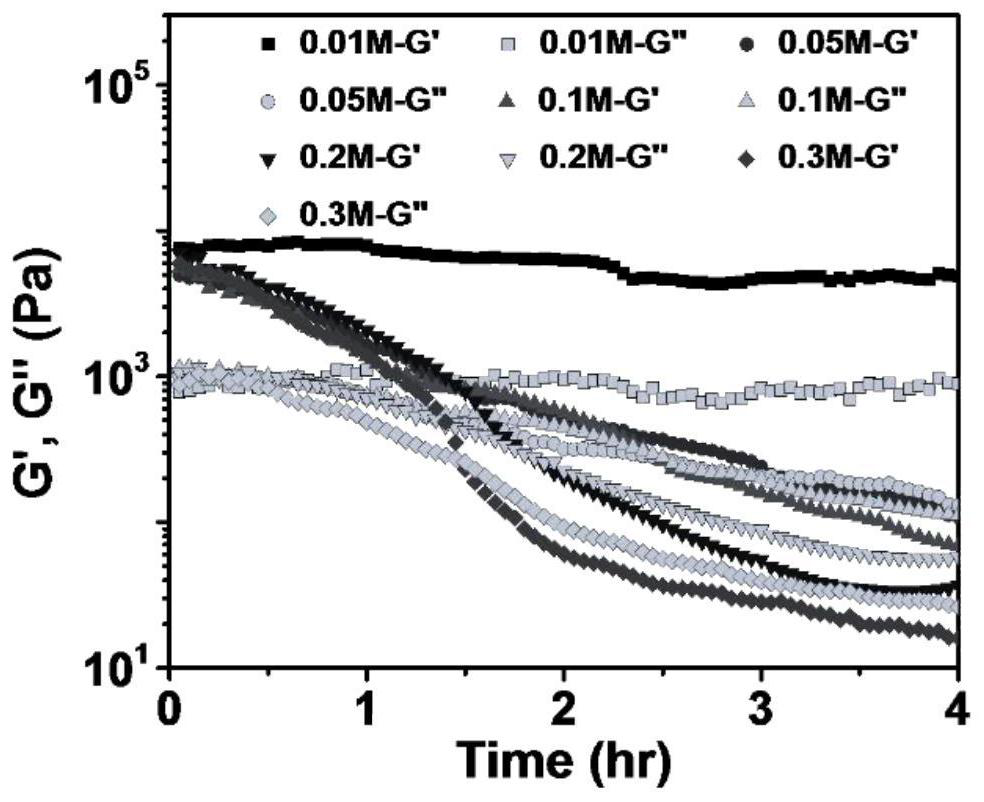Green reprocessing method of polymer hydrogel
A polymer hydrogel and hydrogel technology, applied in the polymer field, can solve the problems of unfavorable environment, heating and high energy consumption
- Summary
- Abstract
- Description
- Claims
- Application Information
AI Technical Summary
Problems solved by technology
Method used
Image
Examples
preparation example Construction
[0046] 1) Preparation of borax-crosslinked PVA hydrogel: mix PVA and borax in an aqueous solution, the final concentrations of PVA and borax are 50 mg / mL and 13 mg / mL respectively; the hydrogel is formed in less than 10 minutes;
[0047] 2) Glucose, mannose, and sucrose were added to the above-mentioned borax-crosslinked PVA hydrogel respectively. As the final concentration of added glucose, mannose, and sucrose increased to 1.2M, as figure 1 As shown, glucose and mannose appear as a sol, while sucrose is still in a gel state, indicating that cis-1,2-diol can break boronate bonds at high concentrations. Therefore, the preferred substrate sugar in the present invention is sucrose.
[0048] Experiments test the effect of sugar concentration on hydrogel reprocessing. By controlling the concentration of sugar, the amount of carbon dioxide produced is regulated, thereby controlling the time from gel to sol, and the subsequent release of carbon dioxide, which determines the time fro...
Embodiment 1
[0053] A method for green reprocessing of polymer hydrogel, the steps are as follows:
[0054] (1) Preparation of yeast-containing borax-crosslinked PVA hydrogel: PVA, yeast, borax and pH indicator xylenol orange were mixed in aqueous solution, and the final concentrations of PVA, yeast, borax and xylenol orange were 50 mg respectively / mL, 13mg / mL, 13mg / mL, and 0.18mg / mL; hydrogels formed in less than 10 minutes;
[0055] (2) Add sucrose with a final concentration of 0.1M to the above-mentioned borax-crosslinked PVA hydrogel containing yeast, and use yeast to metabolize sucrose to generate carbonic acid, thereby reducing the pH of the gel system and breaking the dynamic covalent boron ester bond open to trigger the instantaneous liquefaction of the polymer hydrogel, the gel turns into a sol, and then releases carbon dioxide (CO 2 ), the pH of the gel system increases, so that the sol becomes a gel.
Embodiment 2
[0057] A method for green reprocessing of polymer hydrogel, the steps are as follows:
[0058] (1) Preparation of yeast-containing borax-crosslinked PVA hydrogel: PVA, yeast, borax and pH indicator xylenol orange were mixed in aqueous solution, and the final concentrations of PVA, yeast, borax and xylenol orange were 50 mg respectively / mL, 13mg / mL, 13mg / mL, and 0.18mg / mL; hydrogels formed in less than 10 minutes;
[0059] (2) Add sucrose with a final concentration of 0.1M to the above-mentioned borax-crosslinked PVA hydrogel containing yeast, and use yeast to metabolize sucrose to generate carbonic acid, thereby reducing the pH of the gel system and breaking the dynamic covalent boron ester bond open to trigger the transient liquefaction of the polymer hydrogel, the gel becomes a sol, and AM, HHM, and MBA are added to the transient sol under stirring conditions, and the final concentrations of AM are 50 mg / mL and 100 mg / mL, respectively , 200mg / mL, the mass ratio of AM, HHM,...
PUM
 Login to View More
Login to View More Abstract
Description
Claims
Application Information
 Login to View More
Login to View More - R&D
- Intellectual Property
- Life Sciences
- Materials
- Tech Scout
- Unparalleled Data Quality
- Higher Quality Content
- 60% Fewer Hallucinations
Browse by: Latest US Patents, China's latest patents, Technical Efficacy Thesaurus, Application Domain, Technology Topic, Popular Technical Reports.
© 2025 PatSnap. All rights reserved.Legal|Privacy policy|Modern Slavery Act Transparency Statement|Sitemap|About US| Contact US: help@patsnap.com



